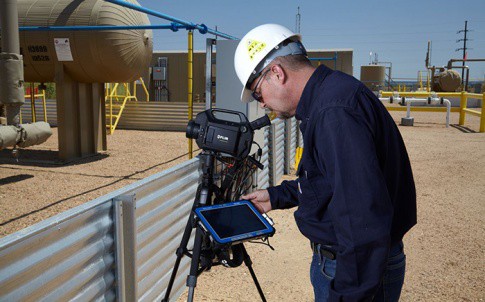
FLIR Systems reports on how its GF-Series Optical Gas Imaging (OGI) cameras can be used by the oil and gas industry to quantitatively measure methane emissions and create a datum point for future methane reduction calculations.
Traditionally gas has been flared when it arrives as an unwanted part of an oil production stream. Where regulations permit, flaring gas has long been viewed the easiest way to handle this problem. However, gas flaring is damaging for environmental reasons resulting from emission of Carbon Dioxide and unburnt methane and also risk to health from hydrocarbon liquids and particulate matter entering the atmosphere. As a result, many oil companies are making efforts to get a better handle on both flares and emissions, to try to demonstrate that gas is a cleaner fuel than coal.
Over the last decade - OGI cameras have been widely used in the oil and gas industry to help find leaks. Traditionally their use was usually followed up with other methods, such as sniffers and ultrasonic devices, to assess the size of the leak.










Invinity to build 20MWh flow battery in UK
Redux flow cells have had nowhere near the R+D effort compared to Lithium ion. They certainly have the potential (pun not intended) for longer...